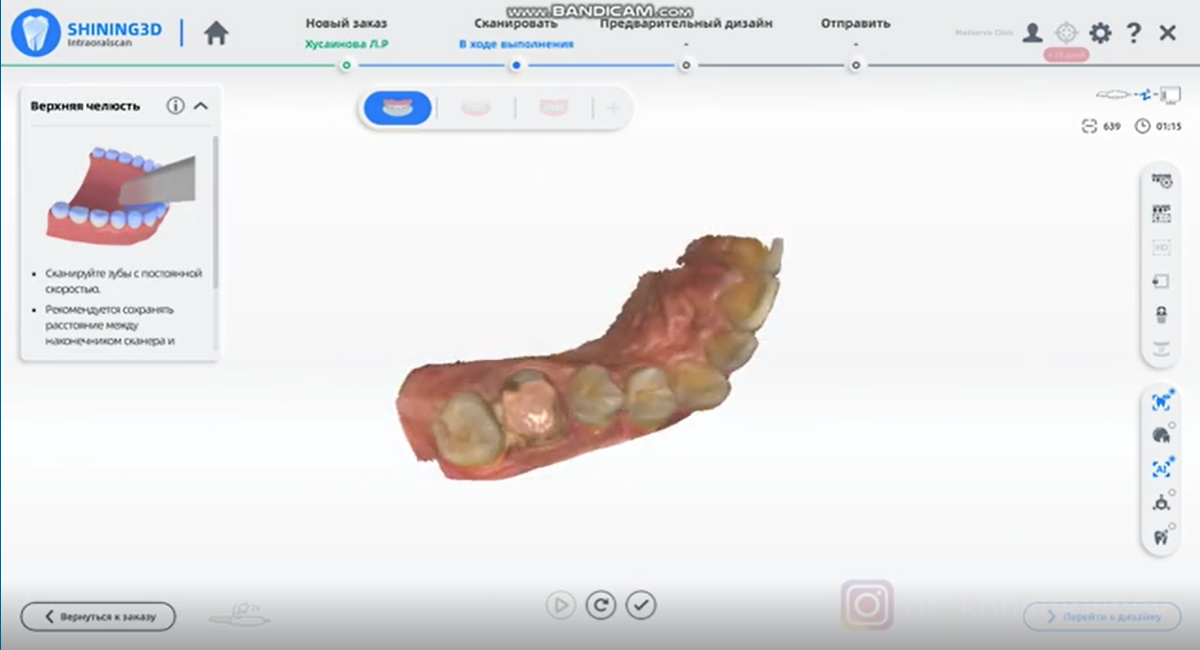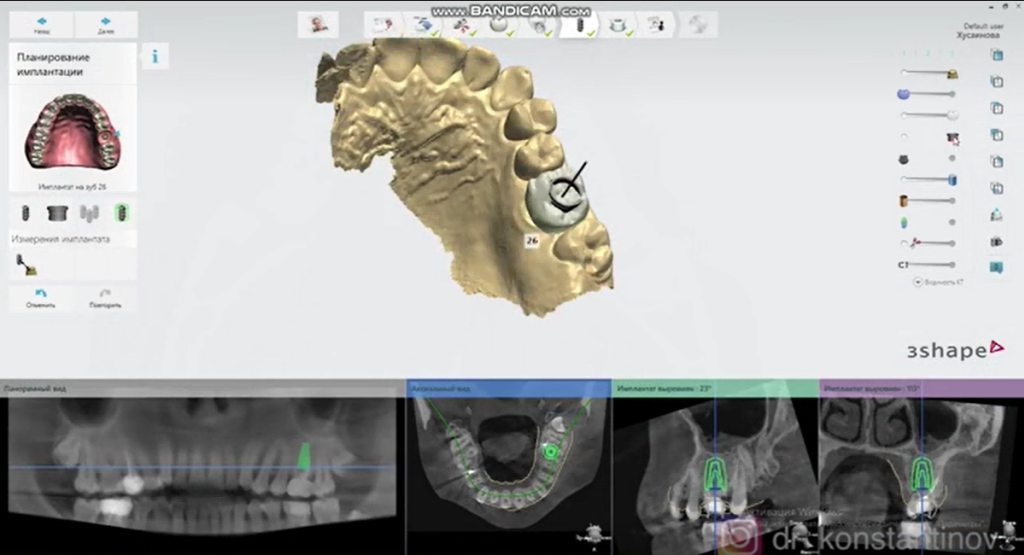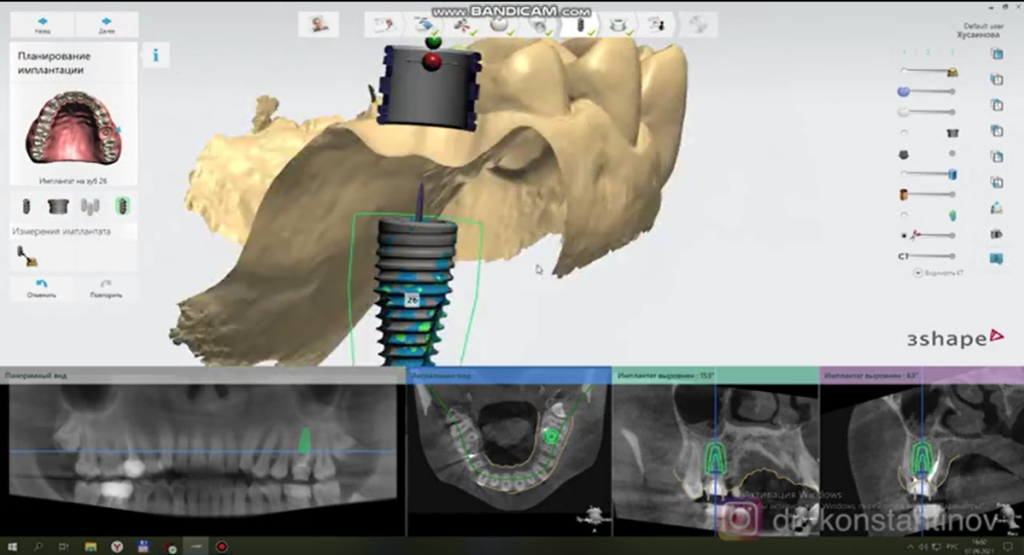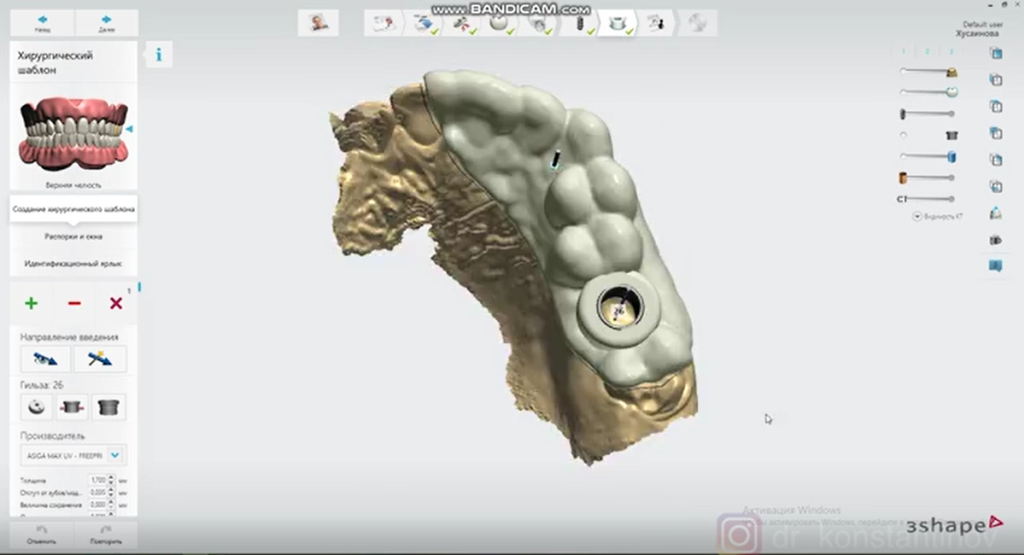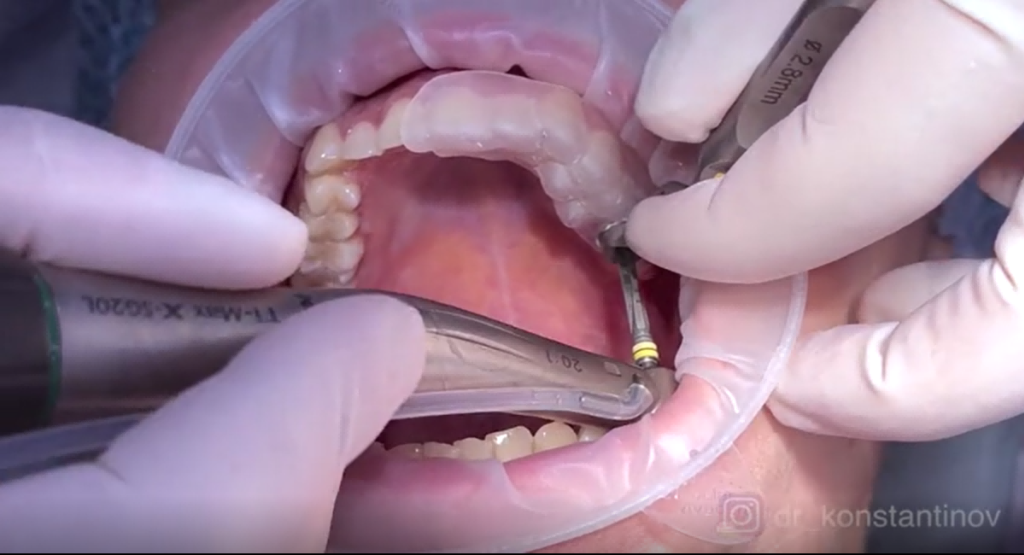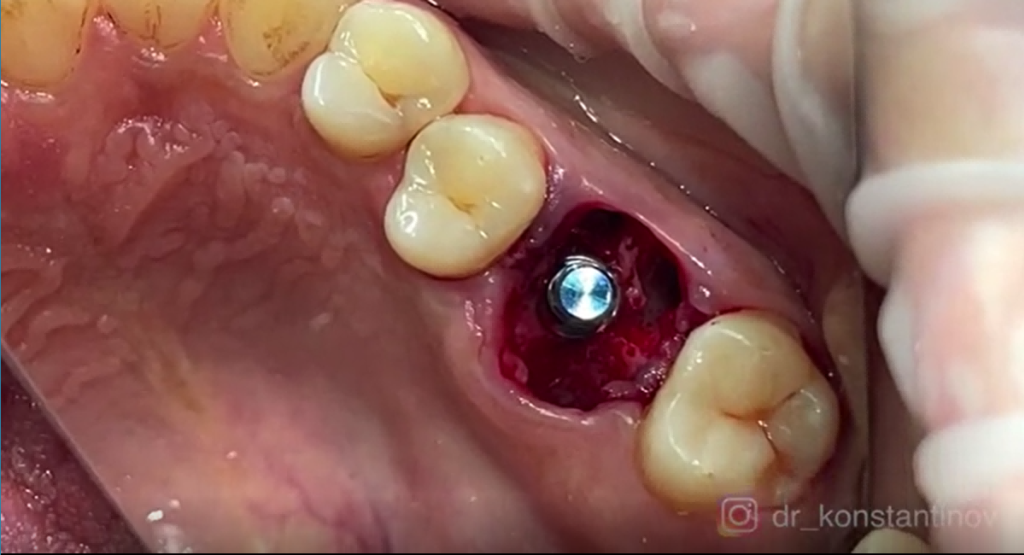This case study explores the creation of a fully 3D printed surgical guide based on a 3D digital impression.
Introduction
To improve implantation precision and the accuracy of flapless procedure in complicated dental implant surgery, the position and depth of the implant can be controlled to avoid mistakes caused by improper human operation. Navigation technology for full guided implant surgery by combining preoperative data with digital model, surgical guide can be designed and printed by rapid prototyping technology, which can complete all surgical procedures of implantation accurately. Based on the 3D simulated surgery, the position of bone tissue and nerve can be accurately analyzed without the cumbersome and inconvenient plaster model taking, so as to determine the ideal and safe position of implant, furthermore, the operation is minimally invasive and painless.
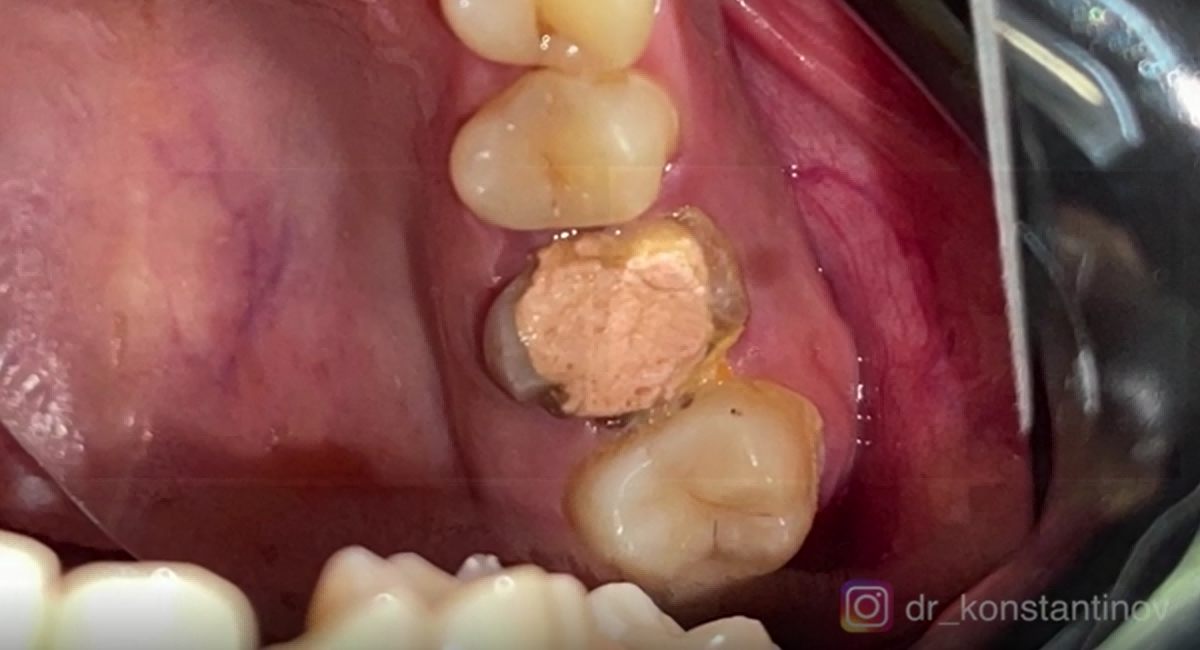
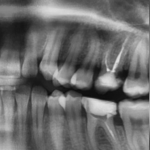
Patient information
The patient is a 31-year-old female. Her caries on tooth #26 are too serious to be restored. We must extract it and place an immediate implant.
Intraoral 3D scanning
First, we acquire upper arch data with Aoralscan 3 from SHINING 3D. Compared to traditional impression-taking, patients find this non-contact impression-taking method comfortable. The Aoralscan’s “true color” feature also helps the patient see their specific oral situation more clearly. In this case, the patient could specifically look at tooth #26 and understand the dentist’s restoration plan better.

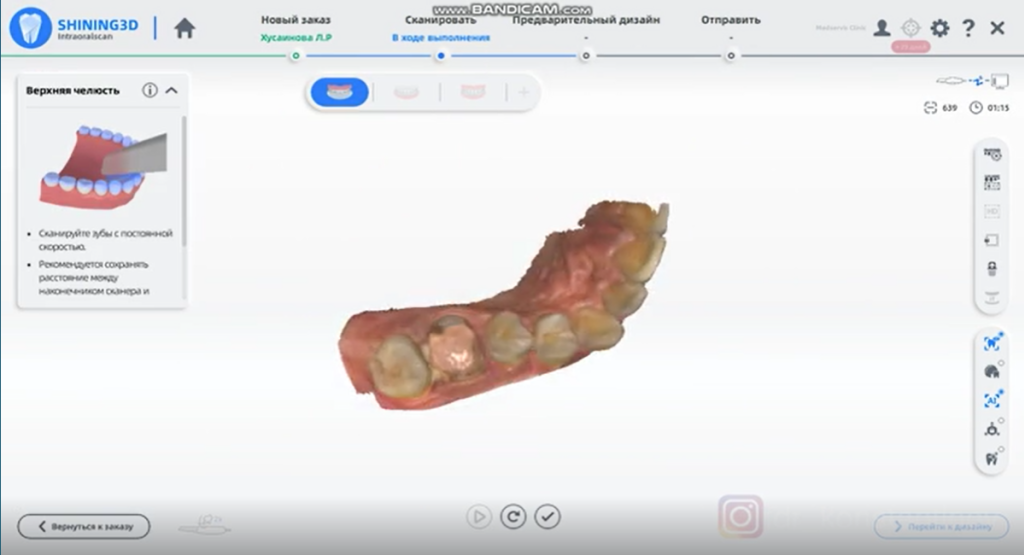
Designing the 3D printed surgical guide
We uploaded the digital impression and CBCT data to realize virtual visual implant planning in the design software. We were able to accurately recreate the maxillary sinus in the software. Thus, we know the exact height from the bottom of the maxillary sinus to the top of the alveolar. This helps determine the length of the implant, and whether the maxillary sinus or the height needs to be lifted. After planning, we can generate a surgical guide. All the planning information can be output as a carrier through the surgical guide.
However, it is difficult to find a suitable healing abutment because of the large fossa after extraction. Therefore, we can also design a personalized healing abutment before extraction.
3D printing
We can quickly 3D print the surgical guide with the AccuFab-D1 3D printer from SHINING 3D.


Surgery
Under the guidance of the surgical guide, we prepare the implant bed step by step with the reamer and finally place it accordingly.
After surgery, we use a prefabricated personalized healing abutment to fit the socket.





Benefits of using a 3D printed surgical guide
In conclusion, the 3D printed surgical guide enabled accurate implant placement, meeting the preoperative design and requirements. The patient, satisfied with the operation and result, experienced only a small trauma.
 ENG
ENG









